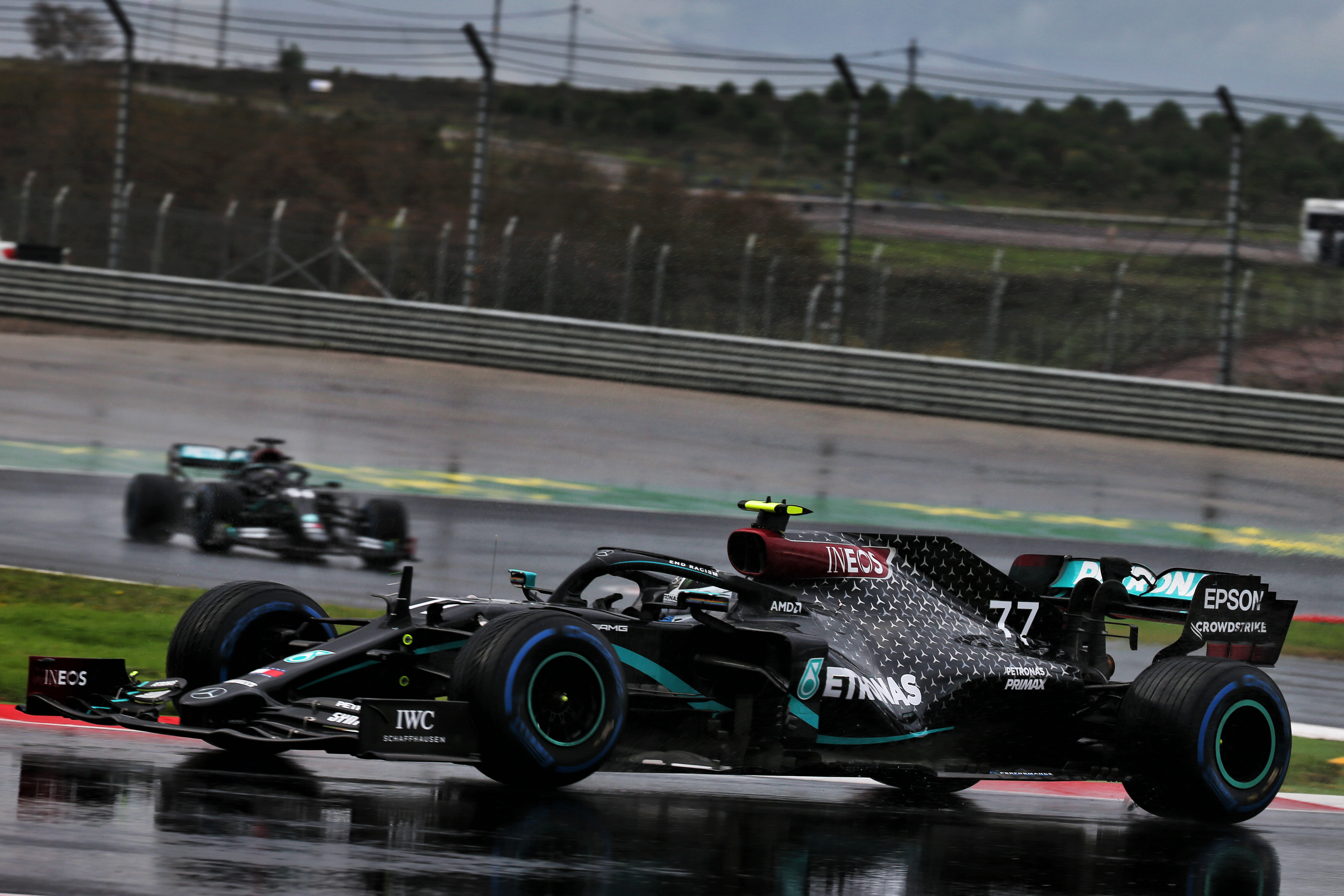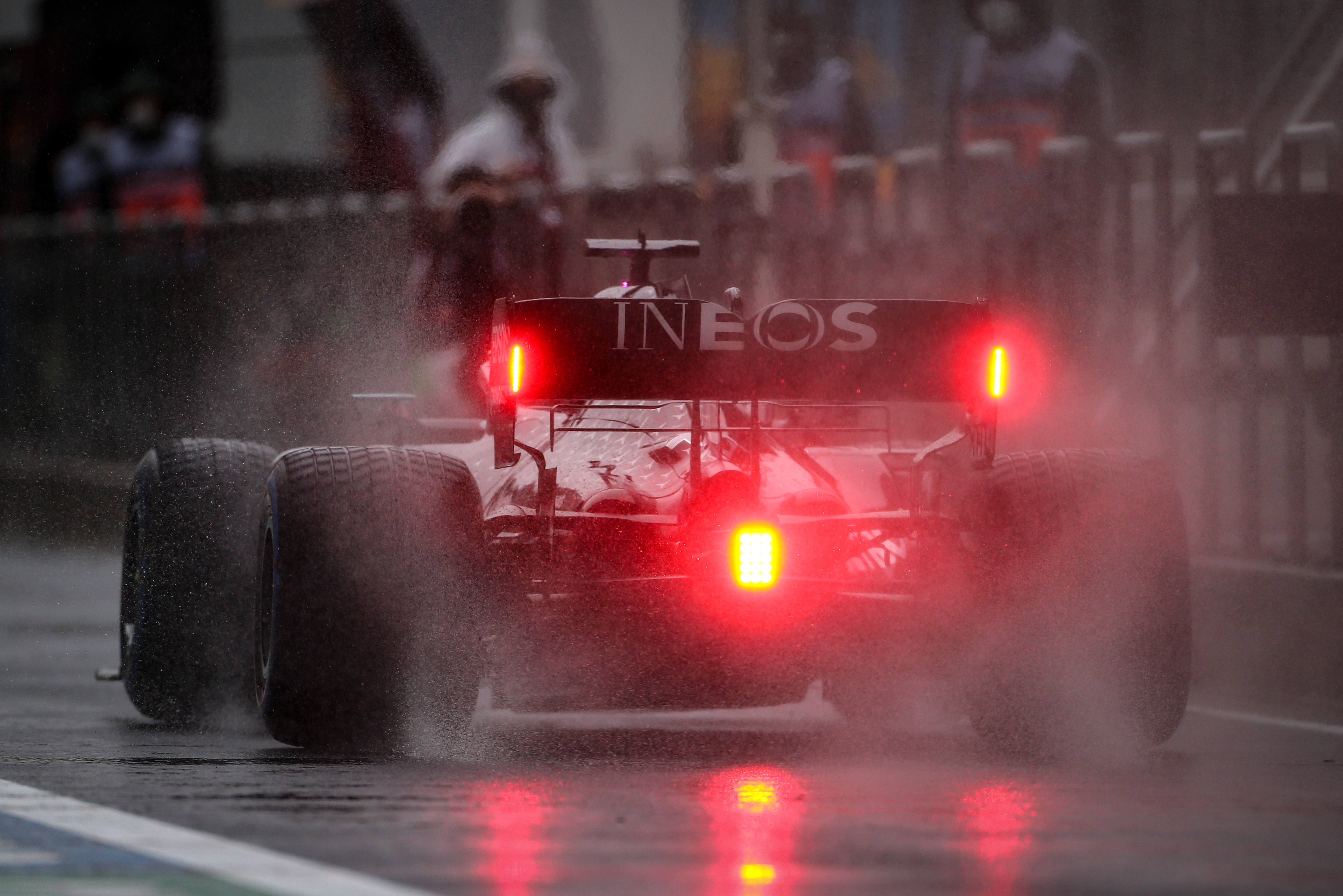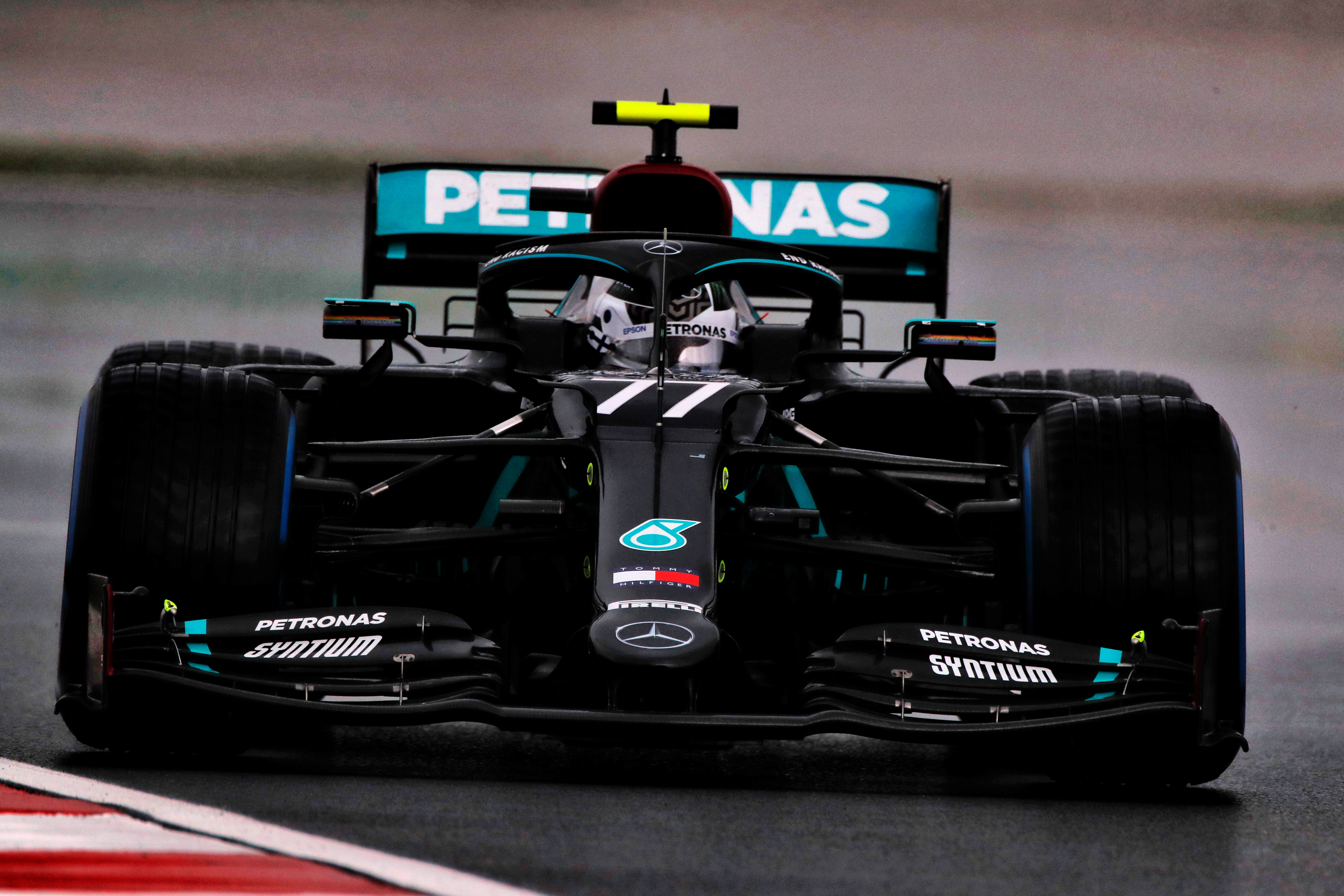Mercedes’ bid to become the first Formula 1 team to take a clean sweep of pole positions in one season was demolished by its comprehensive defeat in qualifying for the Turkish Grand Prix.
Lewis Hamilton was the lead W11 driver in sixth place, but he was a huge 4.8s slower than poleman Lance Stroll. Valtteri Bottas will line up eighth after lapping 5.5s off the pace. Such margins are alarming, especially when Hamilton describes his efforts as: “I did the best I could. I didn’t spin, I didn’t really make any mistakes. I did everything I could with what I had.”
Despite this he was still a full second slower than the next driver, Renault’s Daniel Ricciardo. Hamilton described the session as “one of the least enjoyable probably, if not the least enjoyable that I’ve had” and “one of the hardest if not the hardest in terms of grip”.
That this was the Mercedes’ peak highlights the extent of the difficulty the drivers in what team boss Toto Wolff called “a very unusual set of circumstances”.
The cause is, on the surface, quite simple. “Gaps that big are always linked to tyre temperature, unless you’ve got some pretty major parts that have fallen off,” said Mercedes trackside engineering director Andrew Shovlin.
But why was the best car suddenly so average? That is what Mercedes’ inquest will no doubt bid to uncover. Already though there are some Turkey-specific clues. As Bottas said: “In the end, the tyres are the only thing that is connecting the car to the ground. And if you can’t create the grip from the tyres, it doesn’t matter what kind of cars on those tyres.
“I think today, we don’t find the tricks and get the tyres to work and we didn’t do a good enough job.”

Bottas struggled even worse than Hamilton and had a spin that interrupted Hamilton’s first flying lap on intermediates. The Finn said it was mentally “really tiring” having to concentrate through the session and “easy to go over the limit”. That error proved he was speaking with experience.
But the W11 can work in the wet, as Hamilton took a crushing pole position in awful conditions in Austria earlier this year, and Mercedes even made some changes to the car here based on what was learned in low-grip continues at the Portuguese Grand Prix a few weeks ago.
Why that wasn’t repeatable in Turkey appears to be down to the extremities of the circumstances at Istanbul and how it has exposed a fundamental weakness within the Mercedes package, even if it is one that only exists in a very narrow band of circumstances.
“From the word go this weekend, we’ve been on the backfoot” :: Andrew Shovlin
Hamilton and Bottas were already looking vulnerable even in the dry because of the ultra-smooth, low-grip new track surface at Istanbul. Hamilton has been unhappy with the quality of the Turkish surface all event. He said after qualifying that the resurfacing had “kind of ruined it a little bit”, with so many drivers previously excited to return to a popular circuit.
“This whole weekend has been a nightmare on the track,” Hamilton said. “The grip is so poor. But I think everyone’s in the same boat.
“The track surface grip is the worst I’ve ever experienced in any year of racing. Considering how much downforce we have, it’s been a challenge and then again, going into the wet today made it even harder.
“Usually in the wet it’s quite poor in general. But here it’s like 10 times, 20 times worse than any other track we’ve been to.”

The rain and cold ambient and track temperatures that came on qualifying day were painful additional variables that moved the weekend into a very different environment to, for example, the Styrian GP. And as the team has worked hard to make its car less vulnerable to hot conditions it is kind on its tyres – too kind, it seems, to excel in the conditions in Turkey.
That was already becoming clear in Friday practice. To the point that Shovlin admitted falling behind midfield cars was a “surprise”, it was not one that manifested itself in qualifying.
“From the word go this weekend, we’ve been on the backfoot,” he said. “We have made some changes to the car, but there’s a limit to what we can do out in the field. So we were not very confident.”
It meant Mercedes was trapped in a vicious circle, unable to produce the tyre temperature required to get more grip, which would let the drivers go faster through the corners, which would build more temperature, which would produce more grip. Which is why Max Verstappen’s Red Bull or the Racing Points of poleman Stroll and Sergio Perez could find big chunks of time lap-by-lap, but the Mercedes drivers couldn’t.
Hamilton shipped 2.4s to Stroll in the middle sector alone. That comprises Turn 7, the uphill right-hander that caught several drivers out through the weekend, to just before the right kink on the back straight.
It is not a long stretch but comprises two low-speed corners and braking events, two sensitive traction zones and the high-speed quadruple-left Turn 8. And it indicates just how much the Mercedes struggled versus cars that had the tyres switched on, with the frontrunners able to attack with much more confidence.
Hamilton was already struggling to bring the right-front up to temperature on full wets in Q3 and the mid-session switch to inters meant they ran out of time to get them working. Shovlin admitted that he thought Racing Point had picked the wrong tyre to begin with, as Mercedes did not expect the inter to warm up properly. But the tyre wasn’t the limiting factor, the W11 was.

“It’s one of those days where I think getting lost in the decisions you make in the session is the wrong thing,” said Shovlin.
“We’ve got to look at why do we have a car that has had every pole position this year, that normally is the fastest car in the race, and suddenly we are seconds off pole. And we need to focus on the car and the tyres, not the decisions that we made on the pitwall.”
Wolff said “there is no excuse that I’m that I’m searching for why we haven’t performed today” and that Mercedes simply was not prepared enough for the unexpected circumstances. But he backed his team to find a way to recover on Sunday, although to what extent nobody is that sure.
“We have such a great group of people that is already on the case to see what we can do for tomorrow” :: Toto Wolff
If it’s wet, the leaders will be a dozen seconds clear in just a few laps. If it’s dry, Hamilton and Bottas still need to pick off some slower cars – and even then there’s no guarantee they will be the quickest, or that their tyres will hold up after suffering graining in the cold, low-grip conditions of Friday.
“The thing that will probably keep us awake at night tonight is that idea of getting swallowed up by the pack,” said Shovlin. “And the leaders are sprinting away and you can’t match their pace.
“We’ll get there because we have shown that we can generate temperature, it just takes us a long time. But the wet and the dry is not very different here.
“It’s the same issues. Low grip, balance, generating temperature – the problems are identical.”

Shovlin and Wolff both backed the team to find a solution of sorts, and also learn lessons that will be applicable in the future.
“We have such a great group of people that is already on the case to see what we can do for tomorrow and have some damage limitation,” said Wolff.
“And I’m sure if this happens again, we will be in a much better place.”
Wolff joked that such conditions are at least unlikely in Bahrain and Abu Dhabi, the venues for the first final three rounds of 2020. He can afford to laugh given Mercedes already has the constructors’ championship sewn up, with Hamilton on the verge of the drivers’ crown as well.
Mercedes didn’t get where it is by being satisfied with botched weekends, though. Difficult days are few and far between, but they are always touted as the most educational and beneficial. If the value of the lesson is equal to the size of the setback then Turkish GP qualifying will yield an almighty benefit for Mercedes in the future.
But Hamilton and Bottas sorely need Mercedes’ immediate investigation to yield a quick answer if they are to be considered realistic victory contenders on Sunday.



